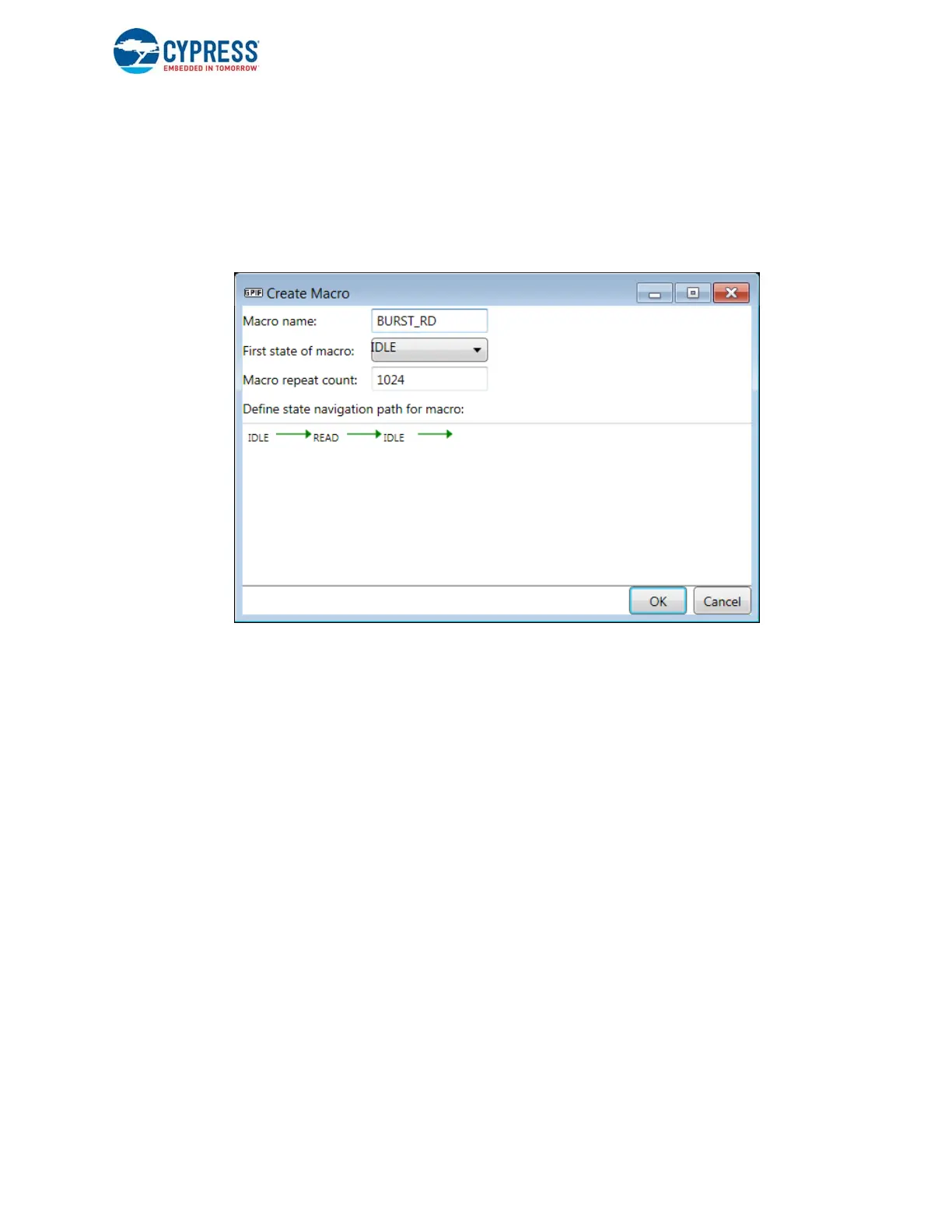EZ-USB FX3 Technical Reference Manual, Document Number: 001-76074 Rev. *F 146
General Programmable Interface II (GPIF II)
7.6.8 Macro
A macro is a reusable scenario corresponding to a circular timing path with repeat count. A macro is created and saved
similar to a Scenario, except that the macro always has the same end state as the start state and has a repeat count.
Typically a macro is used to analyze repeating circular state paths. Consider a burst operation. The state paths of a burst read
or burst write are repeated a number of times. An analysis of such an operation can be simplified by specifying it as a macro.
Figure 7-29. Create Macro Dialog Box
7.7 GPIF II Constraints
The GPIF II hardware imposes some limitations on the state machines that can it can create, as follows:
■ Native support is limited to state machines that are limited to two (or fewer) outgoing transitions from each state. Such
state machines are called "binary state machines" in the rest of this document.
■ Each transition equation is limited to the use of four or fewer trigger variables.
Note that many GPIF II protocols involve simple decisions, such as sampling ready signals or other inputs. The following
discussion applies to situations where the decision logic is less simple.
Two techniques are available to surmount these limitations:
■ Mirror States
■ Intermediate States
The GPIF II Designer tool applies the first technique automatically on state machines that exceed two exit triggers. However,
it is possible that the tool may be unable to identify a set of transformations that allow the state machine to be mapped to the
GPIF II hardware. In such a case, the tool outputs the error message "Unable to synthesize state machine." The user can
follow Guidelines for Transition Equation Entry on page 149 to try and resolve these errors. If the error persists despite
making these changes, contact Cypress Support for assistance.
7.7.1 Mirror States
The mirror state machine technique uses a GPIF II feature that facilitates state machine designs that do not conform to the
previously described rules.
